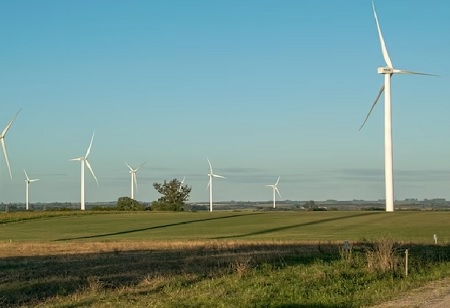 Magazine
Magazine

Researchers at the Indian Institute of Technology (IIT) Madras have developed a combined power generation technology that can generate electricity from both tidal and wind sources. It is an energy converter system that generates electricity in coastal areas to reduce electricity demand and can be deployed as a mobile vehicle for power generation, transmission and storage depending on the power requirements in the coastal area.
A wind turbine mounted on a vehicle’s roof will employ the converter technology to generate wind energy as well as convert tidal energy into electrical energy. The energy output of the system or gadget is entirely renewable and sustainable. The roof-mounted solar panel could also be used to power other equipment on mobile vehicles.
“This technology will potentially entail fewer expenditures, require less maintenance and produce clean and sustainable energy. It can also be utilised as a mobile vehicle. With a lot of potential and the rare capacity to be entirely predictable, tidal energy is a clean, sustainable energy source. The potential industry partners of this technology include companies in the power sector, solar and wind energy,” said Sadham Usean Ramasamy, research scholar, at the department of Mechanical Engineering, IIT Madras.
“The current invention creates electricity using only one vertical axis wind turbine, a horizontal converter mechanism, and no hydraulic set generator based on pendulum support. The current converter also has a variety of height adjustable guider support mechanisms to help regulate the height of the elliptical plate attached to the main shaft. The current idea, on the other hand, lacks a horizontal axis turbine and is entirely onshore, therefore there is no severe corrosion problem,” explained Prof. A. Seshadri Sekhar, Director, IIT Palakkad
The converter is a remote-controlled system that can be relocated to any position based on wave height and power generation requirements. The five gear converters will help operate at least one generator and install at least one vertical axis wind turbine on the roof of a double decker vehicle, said Sekhar, a former Head, Department of Mechanical Engineering, IIT Madras.
The wheel arrangement based on chain teeth/tooth profiles allows the double decker mobile vehicle to be easily relocated from one place to another. Without the need for a submarine connection, the generated electricity can be easily delivered from the transformer. Furthermore, it has lower costs, requires less maintenance, and provides clean energy. It can also function as a mobile vehicle, Sekhar said.
We use cookies to ensure you get the best experience on our website. Read more...